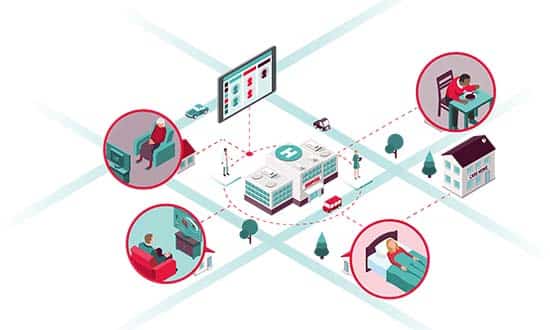Taking a look at NHS England waiting list figures
- 13 May 2022

With each month’s elective waiting list data, we have come to expect new record waiting numbers with depressing regularity. This week’s figures continue that trend with the total waiting list growing to 6.4 million. There are some positive signs on activity, but these mask a growing challenge with admissions argues Digital Healthcare Council director, Graham Kendall.
The elective recovery plan outlines a range of measures to slow and eventually reverse this growth. However, if we delve deeper into the referral to treatment (RTT) data we see cause for concern on the scale of the challenge around admissions, which threatens this recovery.
The guidance on elective recovery planning sets “an ambition in 2022/23 for systems to deliver over 10% more elective activity than before the pandemic and to reduce long waits”. This is a tough goal and there is a lot we can do with solutions away from hospitals, but we also need to keep focused on those who need admitted care.
Since the beginning of 2020, we have seen 2.3 million fewer admissions than we would have expected based on pre-pandemic 2019 levels. The growth in the number of people waiting shows this fall is due to lower admitted activity rather than reduced demand. Slower throughput of patients due to infection control measures and dealing with Covid cases are of course perfectly reasonable explanations but are of little comfort to those who continue to wait.
Glimmer of hope
Today’s figures contain some positive news. The March numbers show total waiting list activity running at a rate slightly above that in March 2019. However, focusing on the total figure risks overlooking crucial detail, because the increase in non-admitted activity (largely outpatients) can obscure what is happening with admissions. Delve a little deeper and we see admissions running at a considerably lower rate than pre-pandemic levels.
We need to look back to March 2019 to understand where we are in relation to ‘normal’ levels given activity had already significantly slowed due to Covid by March 2020. This year’s admissions in March were 7.5% below 2019 levels. A slightly longer view shows that in the first three months of this year, admissions were over 12% below the equivalent level in 2019. That’s the real gap that needs to be addressed in admissions: somewhere between 7.5 and 12 percent to catch up to baseline, plus a further 10% to hit the 2022/23 target.
In numbers, the system therefore needs to admit as many as 66,000 more patients per month throughout 2022/23 than it has managed so far this year to meet the elective recovery target.
That is a big ask, and it follows that we need to use every available tool and make the most of all existing assets. It is right to build more capacity, but that will take time to come on stream, and there are ways of making greater use of what we have right now. We need to be clear that this is not about making staff work harder, it is about doing things more effectively, with everyone working at the top of their skill set.
Sharper focus
Key to this will be a much sharper focus on optimising patient flow and making the most of current resources, right along the patient journey from the point before admission, during the inpatient stay and back out into the community.
Delayed discharge has been well reported as an issue, but we can now understand the scale of that problem with the publication of daily discharge data. In April, 59% of patients ready for discharge spent at least one night in hospital longer than necessary. This peaked at 71% on 3 April and never fell below 50% throughout the month.
Addressing discharge is therefore key, but it is just one bottleneck. We need a comprehensive view across integrated care systems with visibility across all these settings. Crucially, that information needs to translate into action.
Some of this requires manual approaches, but far more can be automated than at present. For example, we know that in hospitals across the UK, a large amount of time is spent walking the wards trying to identify available beds. We can automate this process, freeing up staff to do more valuable activity, saving patients time, and increasing throughput.
Optimising the data
By optimising bed notification, bed preparation and eradicating delays occupying a bed, evidence from Digital Healthcare Council member TeleTracking shows that we could increase capacity by the equivalent of 7000 beds per day across England.
This equates to an additional 440,000 patients per year, or 36,900 per month. That’s a significant chunk towards addressing that 66,000 gap in admissions capacity.
None of this is easy of course. If it were, we would already have achieved it. But it will be a lot harder, if not impossible, if our approach relies on manual data collections and guess work.
The publication of delayed discharge data is a welcome step forward because it illustrates where we are at a national level. Having something similar that looks at how we use beds and other resources in hospital would be similarly helpful.
This publication of data at national level supports increased scrutiny, but to really make the difference at an operational level, three key steps need to be taken across every ICS: automated collection, analysis and action.




